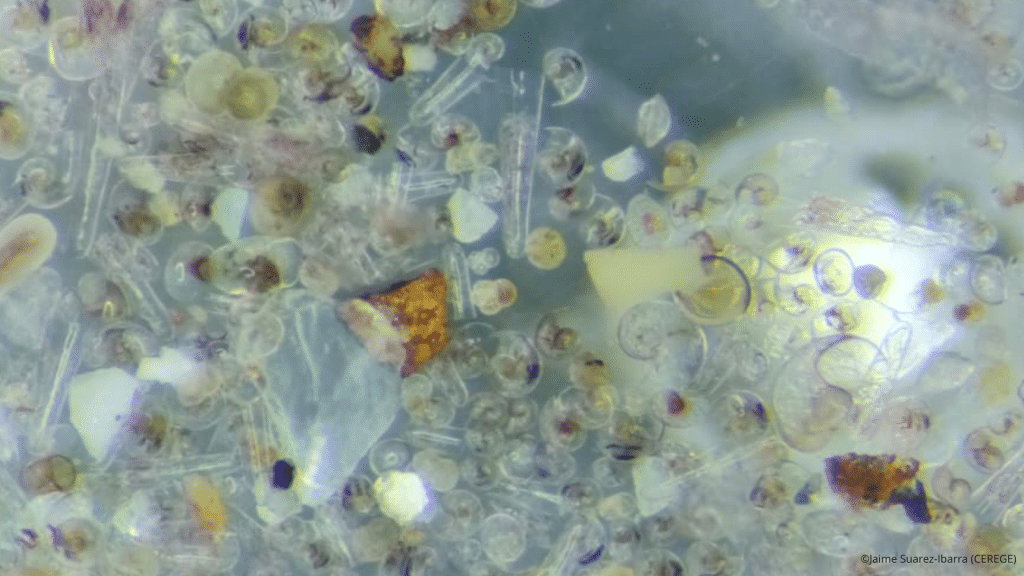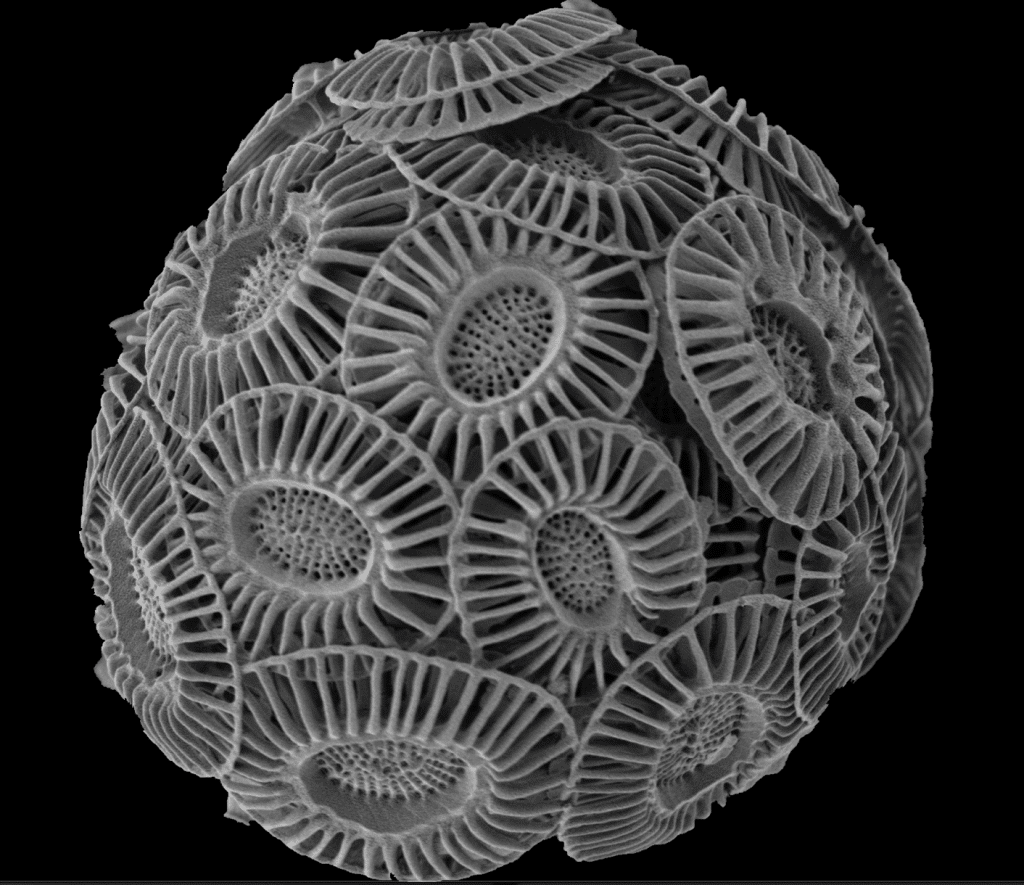Sonia Chaabane (CR, IRD) and Thibault De Garidel (DR, CNRS) have taken part in an international study highlighting the major role played by calcifying plankton in the ocean carbon cycle and in climate regulation. Published this week in Science, This review reveals that these essential marine organisms are vastly under-represented in the climate models used to predict the future of our planet.
Microscopic engineers
but essential
Coccolithophores, foraminifera and pteropods, better known as calcifying plankton, build tiny shells from calcium carbonate (CaCO₃). These shells play a key role in the transfer of carbon from the atmosphere to the ocean depths and influence the chemistry of seawater. Together, these organisms regulate the Earth's “thermostat” and help stabilise the climate. «Plankton shells may be tiny, but together they shape the chemistry of our oceans and the climate of our planet», stresses the scientist. Patrizia Ziveri, principal author of the study.

Sample of calcifying plankton collected in the Bay of Marseille (October 2025) aboard the N/O Antedon II by Julie Meilland (CEREGE) ©Jaime Suarez-Ilbara
Climate models still incomplete
The researchers warn that current models underestimate the diversity and processes associated with these plankton, in particular the surface dissolution of calcium carbonate in the upper layers of the ocean. Ignoring these dynamics risks oversimplifying the response of the oceans to climate change. «We are only just beginning to understand just how diverse calcifying plankton are and how different their responses to environmental change can be», explains Sonia Chaabane, IRD research officer at CEREGE and co-author of the study. «By linking their biology to global carbon dynamics, we can better understand how the ocean buffers climate change - and how fragile this balance is.»
A scientific and ecological emergency
The study highlights the need to accurately quantify the production, dissolution and export of calcium carbonate specific to each group of plankton, and to better integrate these dynamics into climate models. This will make it possible to obtain more reliable projections of carbon storage and future impacts on ecosystems and societies. «If we ignore the smallest organisms in the ocean, we risk missing out on essential climate dynamics,» concludes Patrizia Ziveri.
Reference
Ziveri P, Langer G, Chaabane S, de Vries J, Gray WR, Keul N, Hatton IA, Manno C, Norris R, Pallacks S, Young JR, Schiebel R, Zarkogiannis S, Anglada-Ortiz G, Bianco S, de Garidel-Thoron T, Grelaud M, Lucas A, Probert I, Mortyn PG, 2025, Calcifying plankton: from biomineralization to global change, Science.
doi: 10.1126/science.adq8520


